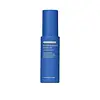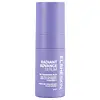What's inside
What's inside
 Key Ingredients
Key Ingredients

 Benefits
Benefits

 Concerns
Concerns

 Ingredients Side-by-side
Ingredients Side-by-side

Water
Skin ConditioningTriethylhexanoin
MaskingButylene Glycol
HumectantGlycerin
HumectantNiacinamide
SmoothingHexylresorcinol
AntimicrobialPanthenol
Skin ConditioningAllantoin
Skin ConditioningTromethamine
BufferingTocopheryl Acetate
AntioxidantSodium Benzoate
MaskingPotassium Sorbate
PreservativeCetyl Alcohol
EmollientGlyceryl Stearate
EmollientPEG-75 Stearate
Ceteareth-20
CleansingCyclodextrin
AbsorbentDisodium EDTA
Pentaerythrityl Tetra-Di-T-Butyl Hydroxyhydrocinnamate
AntioxidantBHT
AntioxidantAvena Sativa Kernel Extract
AbrasiveDiglucosyl Gallic Acid
Resveratrol
AntioxidantXanthan Gum
EmulsifyingAcrylates/C10-30 Alkyl Methacrylate Copolymer
Water, Triethylhexanoin, Butylene Glycol, Glycerin, Niacinamide, Hexylresorcinol, Panthenol, Allantoin, Tromethamine, Tocopheryl Acetate, Sodium Benzoate, Potassium Sorbate, Cetyl Alcohol, Glyceryl Stearate, PEG-75 Stearate, Ceteareth-20, Cyclodextrin, Disodium EDTA, Pentaerythrityl Tetra-Di-T-Butyl Hydroxyhydrocinnamate, BHT, Avena Sativa Kernel Extract, Diglucosyl Gallic Acid, Resveratrol, Xanthan Gum, Acrylates/C10-30 Alkyl Methacrylate Copolymer
Water
Skin ConditioningNiacinamide
SmoothingTranexamic Acid
AstringentButylene Glycol
HumectantPropanediol
SolventDipropylene Glycol
HumectantGlycerin
HumectantUndecylenoyl Phenylalanine
Skin ConditioningAlpha-Arbutin
AntioxidantArbutin
AntioxidantCitric Acid
BufferingSodium Sulfite
PreservativeAcetyl Tyrosine
Skin ConditioningSaxifraga Sarmentosa Extract
Skin ConditioningPaeonia Suffruticosa Root Extract
Skin ProtectingAminopropyl Ascorbyl Phosphate
AntioxidantScutellaria Baicalensis Root Extract
AstringentGlutathione
Sodium Palmitoyl Proline
Skin ConditioningNymphaea Alba Flower Extract
Skin ConditioningPEG-8
HumectantCaprylyl Glycol
EmollientHelianthus Annuus Seed Extract
Skin ConditioningPPG-1-PEG-9 Lauryl Glycol Ether
EmulsifyingHedera Helix Leaf Extract
Skin ConditioningPhytic Acid
Sodium Polyacrylate
AbsorbentDipeptide Diaminobutyroyl Benzylamide Diacetate
Skin ConditioningLactic Acid
BufferingPolyacrylamide
C13-14 Isoparaffin
EmollientLaureth-7
EmulsifyingHydroxyethyl Acrylate/Sodium Acryloyldimethyl Taurate Copolymer
Emulsion StabilisingHexapeptide-2
BleachingKojic Acid
AntioxidantAcetyl Glucosamine
Skin ConditioningArisaema Amurense Extract
Skin ConditioningDecyl Glucoside
Cleansing1,2-Hexanediol
Skin ConditioningPhenylethyl Resorcinol
AntioxidantEthylhexylglycerin
Skin ConditioningFarnesol
PerfumingLinalool
PerfumingAllantoin
Skin ConditioningDisodium EDTA
Glycyrrhiza Glabra Root Extract
BleachingSodium Bisulfite
AntioxidantSodium Metabisulfite
AntioxidantWater, Niacinamide, Tranexamic Acid, Butylene Glycol, Propanediol, Dipropylene Glycol, Glycerin, Undecylenoyl Phenylalanine, Alpha-Arbutin, Arbutin, Citric Acid, Sodium Sulfite, Acetyl Tyrosine, Saxifraga Sarmentosa Extract, Paeonia Suffruticosa Root Extract, Aminopropyl Ascorbyl Phosphate, Scutellaria Baicalensis Root Extract, Glutathione, Sodium Palmitoyl Proline, Nymphaea Alba Flower Extract, PEG-8, Caprylyl Glycol, Helianthus Annuus Seed Extract, PPG-1-PEG-9 Lauryl Glycol Ether, Hedera Helix Leaf Extract, Phytic Acid, Sodium Polyacrylate, Dipeptide Diaminobutyroyl Benzylamide Diacetate, Lactic Acid, Polyacrylamide, C13-14 Isoparaffin, Laureth-7, Hydroxyethyl Acrylate/Sodium Acryloyldimethyl Taurate Copolymer, Hexapeptide-2, Kojic Acid, Acetyl Glucosamine, Arisaema Amurense Extract, Decyl Glucoside, 1,2-Hexanediol, Phenylethyl Resorcinol, Ethylhexylglycerin, Farnesol, Linalool, Allantoin, Disodium EDTA, Glycyrrhiza Glabra Root Extract, Sodium Bisulfite, Sodium Metabisulfite
 Reviews
Reviews

Ingredients Explained
These ingredients are found in both products.
Ingredients higher up in an ingredient list are typically present in a larger amount.
Allantoin is a soothing ingredient known for its protective and moisturizingg properties. Because of this, it is often added to products with strong active ingredients.
Studies show higher concentrations of this ingredient can promote wound healing.
Though it can be derived from the comfrey plant, allantoin is produced synthetically for cosmetic products to ensure purity.
Learn more about AllantoinButylene Glycol (or BG) is used within cosmetic products for a few different reasons:
Overall, Butylene Glycol is a safe and well-rounded ingredient that works well with other ingredients.
Though this ingredient works well with most skin types, some people with sensitive skin may experience a reaction such as allergic rashes, closed comedones, or itchiness.
Learn more about Butylene GlycolDisodium EDTA plays a role in making products more stable by aiding other preservatives.
It is a chelating agent, meaning it neutralizes metal ions that may be found in a product.
Disodium EDTA is a salt of edetic acid and is found to be safe in cosmetic ingredients.
Learn more about Disodium EDTAGlycerin is already naturally found in your skin. It helps moisturize and protect your skin.
A study from 2016 found glycerin to be more effective as a humectant than AHAs and hyaluronic acid.
As a humectant, it helps the skin stay hydrated by pulling moisture to your skin. The low molecular weight of glycerin allows it to pull moisture into the deeper layers of your skin.
Hydrated skin improves your skin barrier; Your skin barrier helps protect against irritants and bacteria.
Glycerin has also been found to have antimicrobial and antiviral properties. Due to these properties, glycerin is often used in wound and burn treatments.
In cosmetics, glycerin is usually derived from plants such as soybean or palm. However, it can also be sourced from animals, such as tallow or animal fat.
This ingredient is organic, colorless, odorless, and non-toxic.
Glycerin is the name for this ingredient in American English. British English uses Glycerol/Glycerine.
Learn more about GlycerinNiacinamide is a multitasking form of vitamin B3 that strengthens the skin barrier, reduces pores and dark spots, regulates oil, and improves signs of aging.
And the best part? It's gentle and well-tolerated by most skin types, including sensitive and reactive skin.
You might have heard of "niacin flush", or the reddening of skin that causes itchiness. Niacinamide has not been found to cause this.
In very rare cases, some individuals may not be able to tolerate niacinamide at all or experience an allergic reaction to it.
If you are experiencing flaking, irritation, and dryness with this ingredient, be sure to double check all your products as this ingredient can be found in all categories of skincare.
When incorporating niacinamide into your routine, look out for concentration amounts. Typically, 5% niacinamide provides benefits such as fading dark spots. However, if you have sensitive skin, it is better to begin with a smaller concentration.
When you apply niacinamide to your skin, your body converts it into nicotinamide adenine dinucleotide (NAD). NAD is an essential coenzyme that is already found in your cells as "fuel" and powers countless biological processes.
In your skin, NAD helps repair cell damage, produce new healthy cells, support collagen production, strengthen the skin barrier, and fight environmental stressors (like UV and pollution).
Our natural NAD levels start to decline with age, leading to slower skin repair, visible aging, and a weaker skin barrier. By providing your skin niacinamide, you're recharging your skin's NAD levels. This leads to stronger, healthier, and younger looking skin.
Another name for vitamin B3 is nicotinamide. This vitamin is water-soluble and our bodies don't store it. We obtain Vitamin B3 from either food or skincare. Meat, fish, wheat, yeast, and leafy greens contain vitamin B3.
The type of niacinamide used in skincare is synthetically created.
Learn more about NiacinamideWater. It's the most common cosmetic ingredient of all. You'll usually see it at the top of ingredient lists, meaning that it makes up the largest part of the product.
So why is it so popular? Water most often acts as a solvent - this means that it helps dissolve other ingredients into the formulation.
You'll also recognize water as that liquid we all need to stay alive. If you see this, drink a glass of water. Stay hydrated!
Learn more about Water